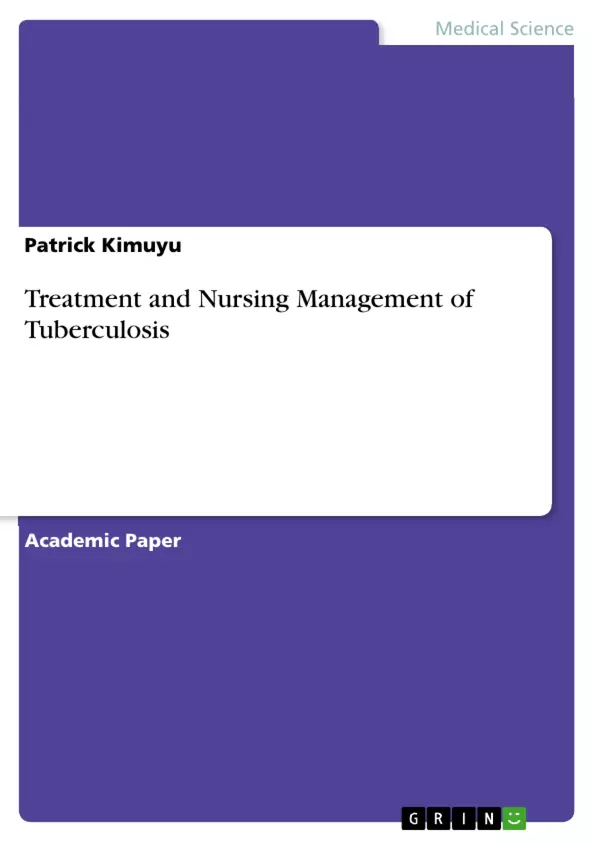In practice, evidence-based practice helps in developing appropriate control and prevention measures of infectious diseases. However, effective intervention relies on an informed understanding of the chain of infection. This is a paramount aspect in professional nursing because it facilitates nursing management of a given condition with the focus of breaking the chain through treatment and nursing management interventions.
Table of Contents
- Introduction
- Elements in the chain of infection of tuberculosis.
- Reservoir:
- Portal of Exit:.
- Means of Transmission:
- Portal of Entry:
- Susceptible Host:
- Nursing Management of Tuberculosis.......
- Treatment Options............
- Role of Professional Nurses in TB management........
- Evidence-based Practice Nursing Intervention ........
- References
Objectives and Key Themes
This document aims to provide a comprehensive understanding of tuberculosis, its chain of infection, and the role of professional nurses in its management. It emphasizes the importance of evidence-based practice in developing effective control and prevention measures for infectious diseases.
- The chain of infection in tuberculosis
- Nursing management of tuberculosis
- Treatment options for tuberculosis
- Role of professional nurses in TB management
- Evidence-based practice in nursing interventions for TB
Chapter Summaries
The introduction provides a foundation for the document, highlighting the importance of understanding the chain of infection for effective disease management. It emphasizes the role of evidence-based practice in developing appropriate control and prevention measures.
The "Elements in the chain of infection of tuberculosis" chapter delves into the six key elements involved in the transmission of TB: the infectious agent, reservoir, portal of exit, means of transmission, portal of entry, and susceptible host. It describes the characteristics of the infectious agent, Mycobacterium tuberculosis, and explains how it spreads through the air.
The "Nursing Management of Tuberculosis" chapter, although not summarized here to avoid spoilers, likely focuses on the nursing interventions and practices used in managing TB patients.
Similarly, the "Treatment Options" chapter, while not detailed here, would likely discuss the various treatment modalities available for TB, including medication regimens and other therapeutic approaches.
The "Role of Professional Nurses in TB management" chapter would likely discuss the specific responsibilities and roles of nurses in managing TB patients, such as patient education, medication administration, and monitoring of treatment outcomes.
The "Evidence-based Practice Nursing Intervention" chapter, not included in this preview, would probably discuss the use of research evidence to guide nursing interventions in TB management.
Keywords
Key terms and concepts explored in this document include: tuberculosis, chain of infection, Mycobacterium tuberculosis, nursing management, treatment options, evidence-based practice, professional nurses, infection control, prevention measures, and susceptible host.
- Arbeit zitieren
- Patrick Kimuyu (Autor:in), 2018, Treatment and Nursing Management of Tuberculosis, München, GRIN Verlag, https://www.hausarbeiten.de/document/388520


